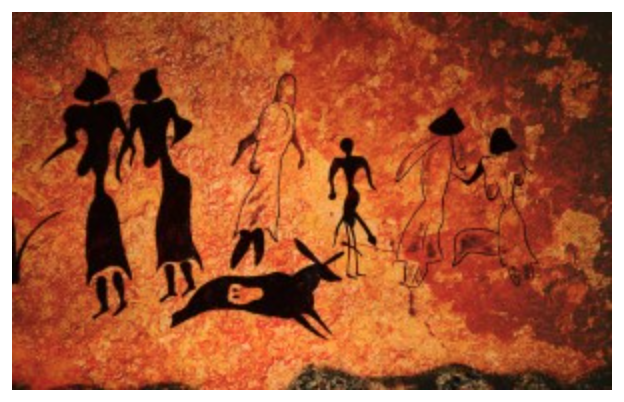Would you Adam and Eve it?
North-east Africa, 200K years BCE:
Was there ever an Adam or an Eve, and did they live together 6,000 years ago in a place called the Garden of Eden? Personally, I suspect not. But the human story according to archaeologists does have an Adam and an Eve: sort of. When a sperm fertilises an egg three things happen, genetically. Firstly, chromosomes from the mother and father mix themselves up together. When order comes out of chaos the genetics of the new individual are, well, individual. Babies are not clones. They may resemble their parents in some ways but each is unique. The second thing that happens in roughly half of all fertilisations is that the sperm delivers a Y-chromosome into the egg’s nucleus. The Y-chromosome does not do the mix-and-match thing. All male babies have a Y-chromosome that is pretty much genetically identical to their father’s. The third thing is that the egg has genetic material outside the nucleus. It is stored in tiny organelles called mitochondria. Like the Y-chromosome, the DNA in the mitochondria does not do the mix-and-match thing either. So, a baby’s mitochondrial DNA is usually identical to its mother’s.

What, you may be wondering, is the point of discussing all this? Well, genetic studies on Y-chromosomes suggests that every genetically male individual alive today has a single common male ancestor, Y-chromosome Adam. Furthermore, all humans alive today, both male and female, appear to have a single common female ancestor, mitochondrial-DNA Eve; sometimes called African Eve. Neither was the first human who ever lived, not by a long way. And, it turns out, they almost certainly never met or mated and, in all probability, did not even live at the same time either. Both our genetic common ancestral parents would each have been part of a clan of other hunter-gatherer humans, but only their mitochondrial and Y-chromosome genes survive today. There is, it seems, only one race – the human race.
(Picture shamwari.com and nomadtours.co.za)

